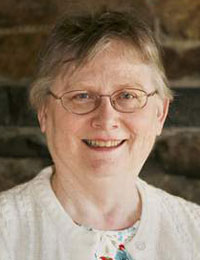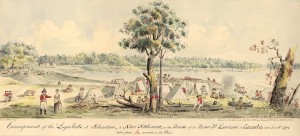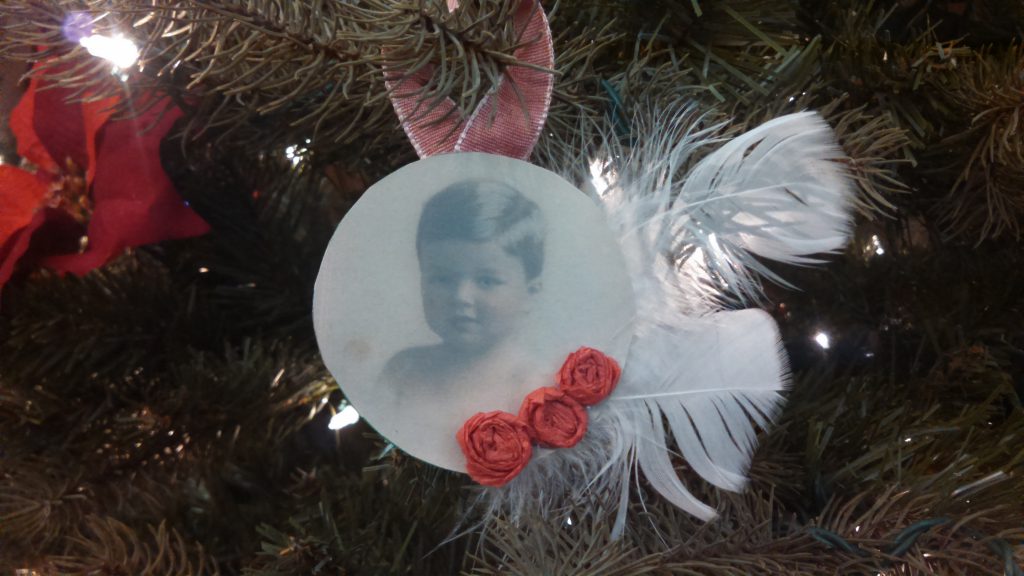 A new database on AmericanAncestors that you might not think to look at is Gov. John Winthrop Papers, Vol. 1–5, 1557 to 1649. These five volumes were originally published by the Massachusetts Historical Society between 1929 and 1947. (The sixth volume, published in 1992, is still under copyright restrictions.) This collection is different from that known as the “Winthrop Journal,” published in 1853, although that also includes some correspondence.[1] Winthrop Papers contains correspondence of members of the extended Winthrop family, including the governor’s father, Adam Winthrop, and his son John Winthrop, the Younger. Continue reading The Winthrop Papers
A new database on AmericanAncestors that you might not think to look at is Gov. John Winthrop Papers, Vol. 1–5, 1557 to 1649. These five volumes were originally published by the Massachusetts Historical Society between 1929 and 1947. (The sixth volume, published in 1992, is still under copyright restrictions.) This collection is different from that known as the “Winthrop Journal,” published in 1853, although that also includes some correspondence.[1] Winthrop Papers contains correspondence of members of the extended Winthrop family, including the governor’s father, Adam Winthrop, and his son John Winthrop, the Younger. Continue reading The Winthrop Papers
Monthly Archives: December 2016
Connecting cousins
 I noted in a previous blog post that my husband Paul and I are live-in caretakers at the William Clapp House in Dorchester, Massachusetts. This house was built in 1806 and serves as the headquarters of the Dorchester Historical Society. Paul and I assist the Society with special events, and we give tours of the house and grounds. The Clap name can be found in Dorchester records dating back to the 1630s – the surname is often spelled with one “p” for earlier generations of this family. Continue reading Connecting cousins
I noted in a previous blog post that my husband Paul and I are live-in caretakers at the William Clapp House in Dorchester, Massachusetts. This house was built in 1806 and serves as the headquarters of the Dorchester Historical Society. Paul and I assist the Society with special events, and we give tours of the house and grounds. The Clap name can be found in Dorchester records dating back to the 1630s – the surname is often spelled with one “p” for earlier generations of this family. Continue reading Connecting cousins
The spitting image

Oral histories are always interesting, often fun, and sometimes “tall,” especially when it comes to snow stories: “I had to walk to school, three miles up hill each way, barefoot in deep snow…” Snow in New England is just a fact of life, and one my ancestors took in stride even when the snowfall was excessive. My somewhat reticent father told me only a few stories, mostly with the admonition to “don’t publish until after I’m gone!!” The story of one “adventure” he and his older brother had one winter came without restriction: Continue reading The spitting image
Lucky clues

On the face of it, my mother’s immediate family was Southern: her father was born in Norfolk, Virginia, and her mother in Baltimore, Maryland. Things quickly get complicated, though, as my grandfather’s mother and my grandmother’s father were both born in Ohio; it was their spouses’ respective families who had the Virginia and Maryland connections. A generation further back, and my great-great-grandfather William Boucher Jr. (1822–1899) is my most recent immigrant forebear, arriving from Mannheim in the Grand Duchy of Baden in 1845. It will not be surprising, perhaps, that some other nineteenth-century ancestors hailed from elsewhere in the United States, or that both of my maternal grandparents had a lot of New England ancestry. Continue reading Lucky clues
Changing town names

In documenting the dates on Mabelle Clifton (Lippitt) (Bourne) Bevins in my last post, her step-mother’s data reminded me of other issues that come our way in family history with new towns being created, or annexed, and the shifting borders of counties and states.
Mabelle’s step-mother, Lillian Hannaford Blazo, was born at Hyde Park, Massachusetts on 5 December 1869, daughter of William Augustus and Mary Elizabeth (Farnum) Blazo.[1] She married at Boston 7 March 1901, Robert Lincoln Lippitt.[2] This marriage listed her birthplace as Dorchester. Lillian died at Providence, Rhode Island 7 February 1937 and her death record listed her birthplace as Milton.[3] Why was there confusion on these two records?
Hyde Park was incorporated as a new town in 1868, just one year before Lillian’s birth, from lands in Dorchester, Milton, and Dedham. From that alone, it’s difficult to say if Lillian was born in the part of Hyde Park that had been Dorchester or Milton, without looking at land records or town directories to see where Lillian’s parents lived, assuming a home birth. Continue reading Changing town names
ICYMI: Loyalist ancestors
[Editor’s note: This blog post originally appeared in Vita Brevis on 10 September 2015.]

Mabel Winters, my great-grandmother, left Yarmouth County, Nova Scotia, when she was about eighteen or nineteen years old. She arrived in the United States about 1900, and first lived with her older brother George in Norton, Bristol County, Massachusetts. I have heard many wonderful stories about Mabel, and I wanted to learn everything that I could about her. As I began to research her life in Nova Scotia, I discovered that she was descended from several Loyalist families. Continue reading ICYMI: Loyalist ancestors
Metadata
 Much has happened with the Society’s Civil War digitization project, funded by the Cabot Family Charitable Trust, since Abbey Schultz’s last article on quality assurance. Our vendor completed all scans in June 2016, ending the imaging portion of the project. The focus then shifted to preparing the images to be uploaded into CONTENTdm software so they can be displayed on our Digital Collections website. Continue reading Metadata
Much has happened with the Society’s Civil War digitization project, funded by the Cabot Family Charitable Trust, since Abbey Schultz’s last article on quality assurance. Our vendor completed all scans in June 2016, ending the imaging portion of the project. The focus then shifted to preparing the images to be uploaded into CONTENTdm software so they can be displayed on our Digital Collections website. Continue reading Metadata
Deck the halls
 For some, the holidays are a time of heightened crafting – making wreaths, designing centerpieces, stringing popcorn garlands, knitting warm to-be-gifted hats and scarves, and building elaborate gingerbread wonderlands. For everyone, the holidays are a time to be with and celebrate family – present and past.
For some, the holidays are a time of heightened crafting – making wreaths, designing centerpieces, stringing popcorn garlands, knitting warm to-be-gifted hats and scarves, and building elaborate gingerbread wonderlands. For everyone, the holidays are a time to be with and celebrate family – present and past.
Since 2013, staff at NEHGS have combined spirited crafting and a passion for genealogy by creating special ornaments using (facsimiles of) family photographs. The ornaments adorn the tree at the Society and are taken home just before Christmas. Even among unrelated crafters, we can’t help but share the “who,” “what,” and “when” of our photos with each other. Some staff have even chosen to represent lines of descent within a single ornament (see below) – a family tree in 3D! Continue reading Deck the halls
Accounting for the care of slaves

I frequently contribute to a column on The Root online magazine, where I respond with Henry Louis Gates Jr. to genealogical questions from the readers. Often the questions involve trying to trace families back to the slavery period, which is a daunting and difficult task. Not only are records hard to come by, but the work can be an emotional rollercoaster.
It is mixed with the delight of finding an ancestor listed by name in a probate record, quickly followed by the realization that they are there because they were property. It can be hard to face the realities of the past when seeing children listed with monetary values next to their names, but also rewarding to know you have pieced a family together with the record. Continue reading Accounting for the care of slaves
Family associations
 I have recently been thinking about an interesting collection in the NEHGS library: our collection of family association newsletters and publications. We have more than 700 different family publications ranging in date from the late 1800s to the present. For some titles, we have just one issue; for others, we have more than 50 years’ worth.
I have recently been thinking about an interesting collection in the NEHGS library: our collection of family association newsletters and publications. We have more than 700 different family publications ranging in date from the late 1800s to the present. For some titles, we have just one issue; for others, we have more than 50 years’ worth.
I was first drawn to the collection by some amusingly clever titles, like Blackburn Beginnings, Chilson Chatter, Collier Collator, Cooley Communiqué, Harlow Happenings, Harris Hunters, Jones Journeys, Kernfield Kernals, and Lay of the Land. I smile at the thought of a group of family members coming up with these names. Continue reading Family associations